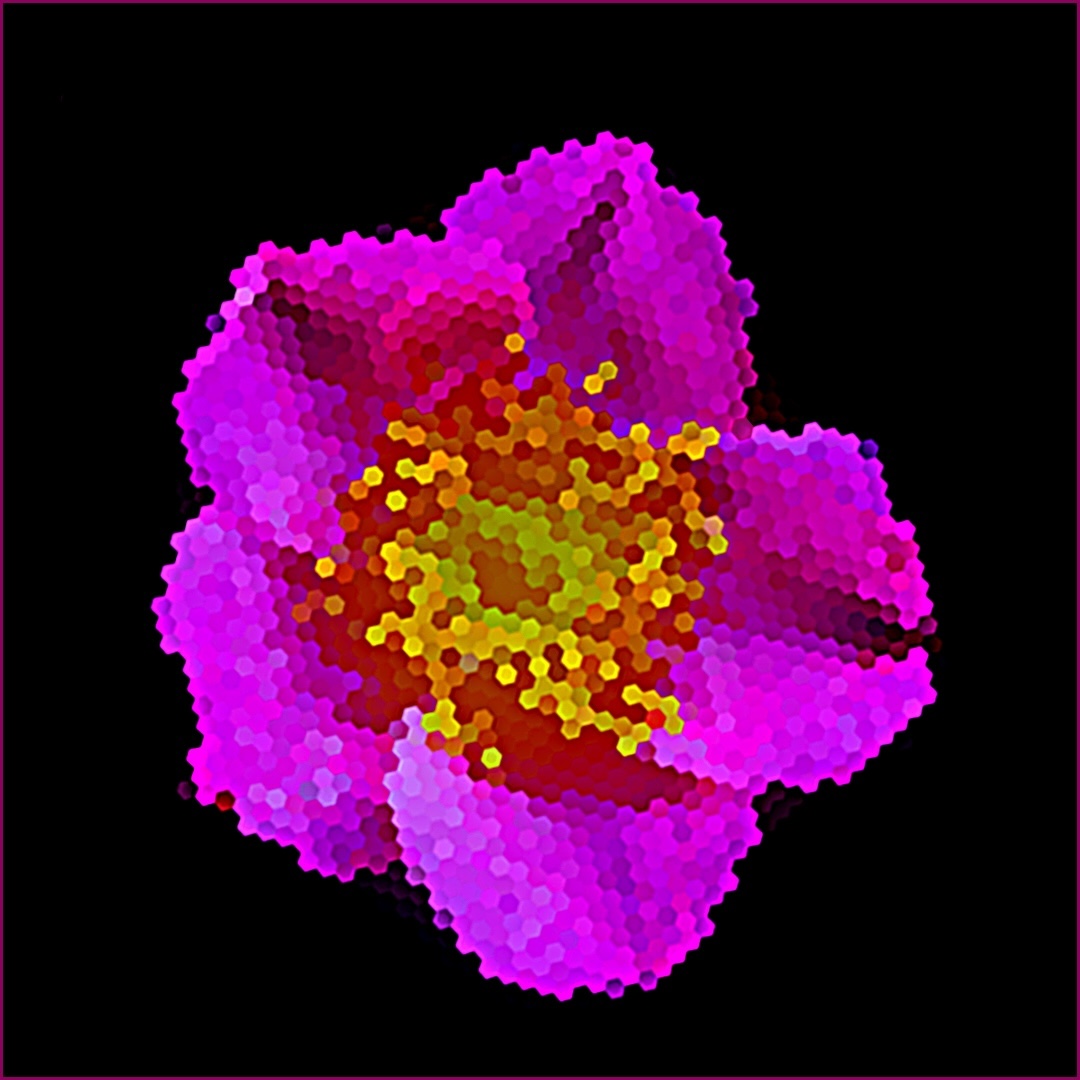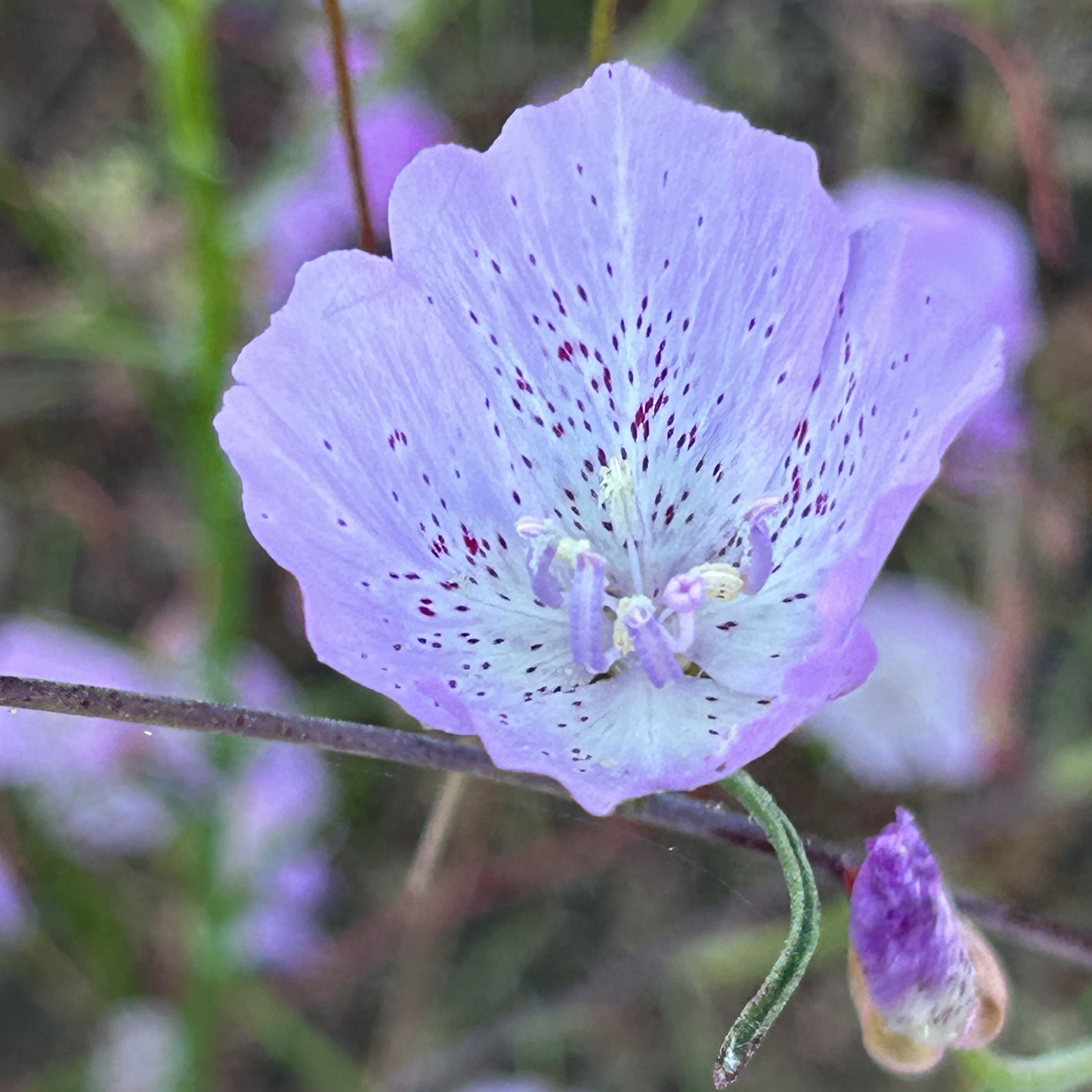Back in June, I was driving up Highway 33 and noticed a patch of unusually vivid purple flowers growing near the road. For some reason, I’d never noticed this species before even though it’s a near certainty I have passed them while blooming many times over the years.
I pulled over, took some photographs, and made a mental note to look these guys up online when I got home. Staring at my search results, it was initially hard to tell if they were Splendid Mariposa Lilies or Speckled Clarkia. The online app said the lilies but the petal number, stamens, and speckles didn’t match what I was seeing. My conclusion was Clarkia cylindrica (but please correct me if I’m wrong.)
So what do we know about this lovely little flower?
It belongs to the Evening Primrose family (Onagraceae) and the genus Clarkia has over 40 species in the Western US and many are endemic to California. If Prince was from Cali, I’d definitely make a play for this being the state flower. Unlikely as it might seem, apparently 20-30 pounds of the seeds can be gathered in one day and either eaten dried, cooked into a kind of oatmeal, or blended with water to make a pinole-like beverage. Clarkia amoena played a medicinal role being used as a medicinal for treating fever, inflammation, and skin conditions. It was also used as a natural dye and food preservative.
The genus name Clarkia has an interesting history. While indigenous peoples had long realized its presence and varied uses, it enters the botanical canon via the Lewis and Clark expedition. Meriwether Lewis collected several specimens in Idaho and sent them back with many other plant species he found notable. His description from the expedition journals is surprisingly thorough:
“The corolla superior consists of four pale perple petals which are tripartite, the central lobe the largest and all terminate obtusely; they are inserted with a long and narrow claw on the top of the germ, are long, smooth & deciduous. There are two distinct sets of stamens the 1st or principal consists of four, the filaments of which are capillary, erect, inserted on the top of the germ alternately with the petals, equal short, membranous; the anthers are also four each being elivated with it’s fillament, they are linear and reather flat, erect sessile, cohering at the base, membranous, longitudinally furrowed, twise as long as the fillament [and] naked, and of a pale perple color. the second set of stamens are very minute, are also four, and placed within and opposite to the petals. These are scarcely persceptable while the 1st are large and conspicuous; the filaments are capillary equal, very short, white and smooth. the anthers are four, oblong, beaked, erect, cohering at the base, membranous, shorter than the fillaments, white, naked and appear not to form pollen. . . . This has the appearance of a monopetallous flower growing from the center of a four petalled corollar.”
The genus was subsequently named after the expedition’s co-captain William Clark. Another common name is “Farewell-to-Spring” because when the Clarkia bloom, you can be sure summer is just around the corner. Per that, I’m definitely going to keep my eyes peeled next June.

